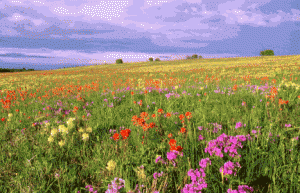
Coyne Prairie – photo by Frank Oberle
St. Louis was once the home of tall grass prairies, stands of grasses that often grew as tall as a man, or even taller. The grasses – especially big bluestem, little bluestem, Indian grass and switchgrass – are still common. Tall grass prairies are a unique and complex ecosystem that protects the environment by providing rich soil, assisting healthy crops to thrive and providing thousands of products to our communities. Prairie grasses are hardy plants. They tolerate drought and heat; they also have deep roots that store carbon, and copious leaves that can be used for biofuels.
The prairie grasses are close relatives of the crops corn and sorghum; whatever we learn about one will apply to the others. Restoring prairies is a high priority at the Shaw Nature Reserve and on the new site at the Danforth Center.
Please join Scott Woodbury, Curator, Whitmire Wildflower Garden at Shaw Nature Reserve and Elizabeth Kellogg, Ph.D., Member, Donald Danforth Plant Science Center on Thursday evening, August 28th at 5:30 pm at the Danforth Plant Science Center, as they discuss the important role that prairie grasses and cereal crops play in agriculture along with the contributions of cutting-edge science and technology.
Thursday, August 28, 2014
5:15 pm Conversations Reception in Lower Atrium
6:00 pm Conversations Program in AT&T Auditorium
The event is free but registration is required. For more information and to register, visit the Danforth Center website.

